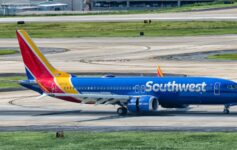How does an airline deal with a disaster? In the case of Southwest Airlines, impressively well.
Scott McCartney, author of the Middle Seat column in the Wall Street Journal, shares the amazing story of how Southwest swiftly dealt with the crisis on Flight 1380. The article is behind a paywall, but I’ll summarize how Southwest handled the incident.
Southwest’s emergency-response plan for a situation like the engine failure on Flight 1380 was well-established. When news broke of the emergency, Southwest sprang into action. Actions included:
- Within an hour, a plane full of specially-trained Southwest employees was dispatched to Philadelphia to take care of customers
- A handful of employees were assigned to individual passengers
- Some employees even provided trauma counseling
- Others relieved local airport workers whose efforts had been re-directed due to the emergency
- A team coordinated with the National Transportation Safety Board (NTSB), offering support in any capacity required
- Four employees flew to Albuquerque, New Mexico, home of Jennifer Riordan, the passenger who was killed on the flight, to help coordinate travel for the family
- Southwest pulled all social media advertising
- About 1/3 of the passengers opted to remain in Philadelphia overnight and Southwest employees remained at their disposable around the clock, even slipping notes under their hotel room doors to remind them of this
- Southwest chartered a special plane for any passengers on Flight 1380 who wished to fly home to Dallas
- Each passenger received a $5,000 check and $1,00 voucher with no strings attached
- CEO Gary Kelly delivered a 40-second video apology
- Airline issued multiple updates throughout the day
CONCLUSION
This was Southwest’s first ever fatality. As the NTSB investigates the source of the problem, Southwest may find itself blamed for failing to properly maintain its aircraft. Should that be the case, another round of horrible news coverage will ensue. But in the meantime, Southwest has bought itself time in its swift and effective handling of the incident.
image: Southwest





Grammar check this article now that the crisis has cooled.
disposal
chartered
Thank you. Fixed.
They handled it pretty well, but it looks like Southwest and other airlines operating th CFM engine in question were aware of issues with metal fatigue, yet lobbied the FAA against a more rapid inspecti9n schedule, which might have caught this in time. Also, this wasn’t exactly Southwest’s first ever fatality. First passenger fatality, yes, but Southwest 1248 (2005) overran the runway and killed someone on the ground.
WN had never killed a “passenger” before, which is the correct way of putting it. It’s true they killed a worker once.
Was the $5,000 check with “no strings attached” a fact? Some people speculate that it might have had release of liability language, but I honestly don’t know. Knowing Southwest culture the former is probably true, but I wouldn’t put anything past a corporation these days.
I’m impressed.
This is how you manage a situation. Any money saved by not devoting all available resources to a situation will be lost to decreased sales and bad press. Have a plan. Execute the plan. Own the situation.
I challenge United to provide such a response. They can’t even handle 1 passenger let alone a planeful.